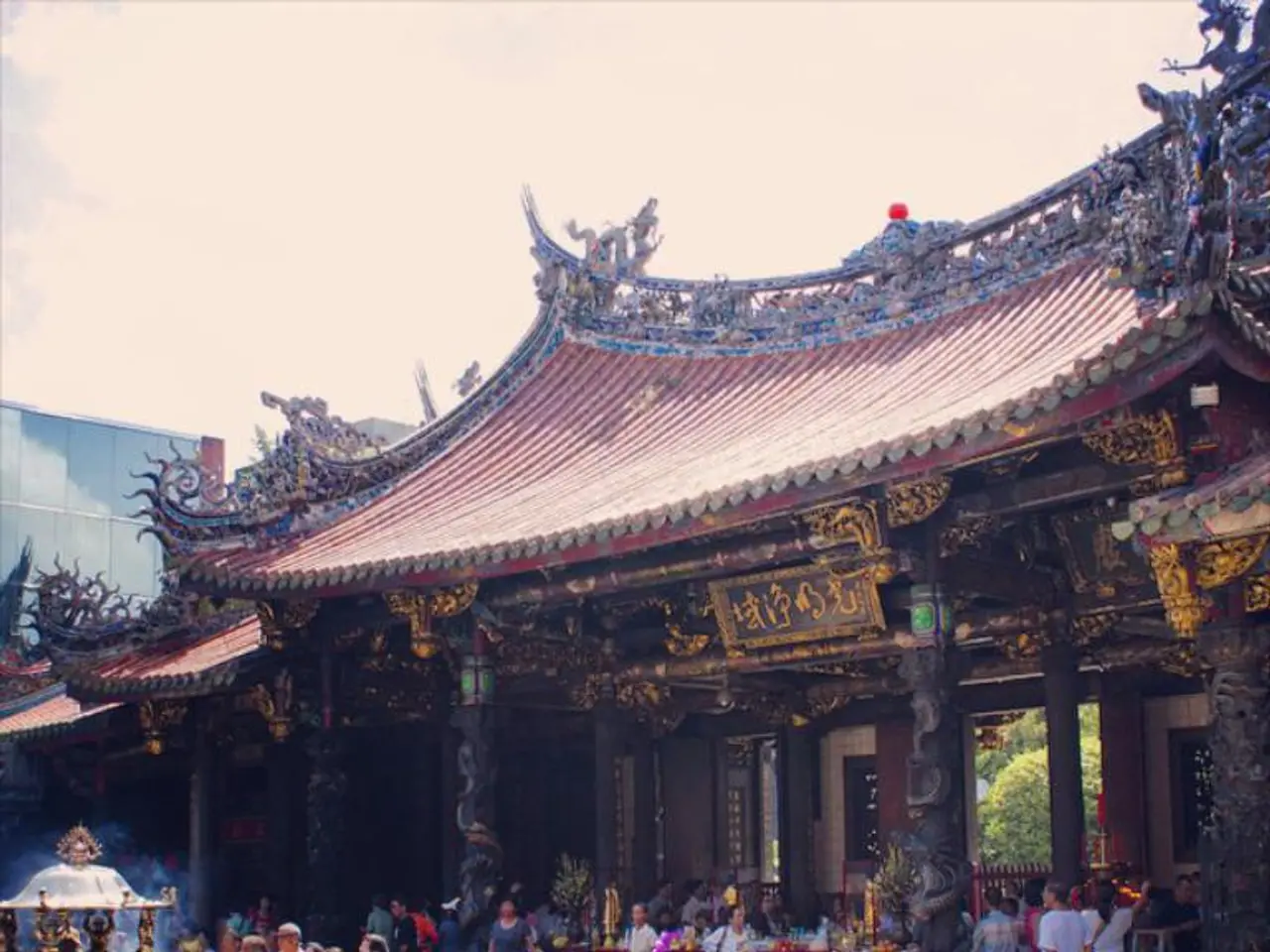Image of Zaō Gongen Statue at Mount Mitoku's Triad of Statues
Standing Image of Zaō Gongen at Sanbutsuji Temple: A Testament to Heian-era Syncretism
Nestled in the Tottori Prefecture lies the Sanbutsuji Temple, home to the Standing Image of Zaō Gongen, an important cultural asset that dates back to the Late Heian period. This statue, standing 1.15 meters tall, is a testament to the rich culture of syncretic beliefs that flourished at Mitoku during the Heian era.
The Standing Image of Zaō Gongen is a manifestation of a buddha in the form of a native deity, particularly associated with shugendō, a syncretic tradition blending elements of mountain worship and Buddhism. The image, carved from hinoki using the yosegi-zukuri technique, was probably painted in color over a base of white clay.
En no Gyōja, a renowned figure who founded mountain asceticism during the Nara period, is said to have built a hall at the foot of the mountain in 706 dedicated to Zaō Gongen. According to legend, he miraculously hurled the hall, known as the Nage-ire hall, into a cliff-face indentation, giving it its name "nageire-dō" or "thrown-in hall." The Nage-ire hall is a National Treasure, showcasing the integration of natural environment and religious devotion.
The Nage-ire hall is built using a unique architectural style known as kake-zukuri, which uses long pillars to support the floor against the sheer rock face, a style similar to the famous Kiyomizudera platform in Kyoto. Although the current structure is probably not the original one, a 2001 survey dated the balcony to around the 12th century, indicating a later reconstruction or modification from the late Heian period.
The okunoin, where the Standing Image of Zaō Gongen was once enshrined, is a national treasure embedded in the cliff face on Mount Mitoku. The remaining images, carved from a single piece of wood, are on display in the Sanbutsuji treasure museum.
The temple, named Sanbutsuji after the installation of images of Shakyamuni, Amida, and Dainichi in 849, houses seven other important cultural properties, all images of Zaō Gongen. The okunoin is known as the most dangerous national treasure in the country due to its precarious and hard-to-reach location.
[1] Saito, K. (2004). The Nageire-do at Mitoku: A Study of a National Treasure. Journal of the Institute of Buddhist Studies, 24(1), 5-30.
[2] Mitoku. (n.d.). Retrieved from https://www.mitoku.or.jp/english/index.html
[1] A captivating photograph of the Standing Image of Zaō Gongen would serve as an impressive lens into Japan's rich cultural lifestyle, documenting a testament to Heian-era syncretism.
[2] For any travel enthusiast interested in exploring significant religious sites, a visit to the Sanbutsuji Temple and its Nage-ire hall, integrating natural environment and religious devotion, lies nestled in Tottori Prefecture, making it a must-see destination in Japan's cultural landscape.





